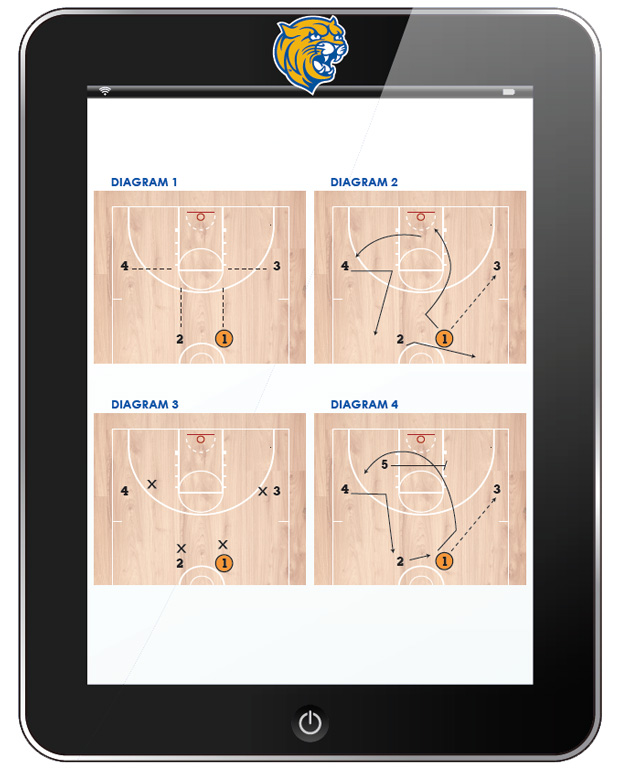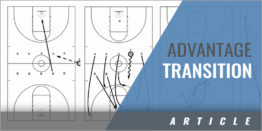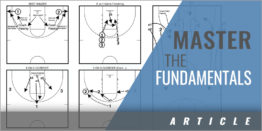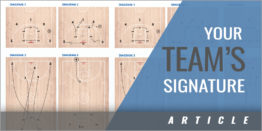| Offensive Shell |
| By: Jim Casciano - Head Coach, Johnson & Wales University - Charlotte
Originally Published in: Time-Out Magazine Provided by: National Association of Basketball Coaches Diagram 1 shows the proper spacing/floor balance for OPEN. The primary emphasis is on pass-cut to the basket and fill the open spot on the floor (Diagram 2). Initially we want a minimum of 4 passes and one ball reversal with player and ball movement in order to cause the defense to move. We teach OPEN using an Offensive Shell - 4 players around 0, no post. Following are some shell drills: 1. 4 around 0: no dribble/no cuts; work on getting open, the timing of the pass, and the catch and read 2. 4 around 0: add the cut still no dribble 3. 4 around 0: cutters with the use of an effective dribble. An effective dribble is used to attack the rim, to improve a passing angle, or to escape defensive pressure. We do not want the ball to stick in our players' hands. When an offensive player catches a pass, he must quickly process what he reads and then either drive it, shoot it, or pass it - move the basketball. We are constantly looking for player and ball movement. This is a passing game, not a dribbling game. 4. Once the basic concept of pass-cut-fill is understood, we add post-up a cutter, dribble handoffs, screens on the ball and off the ball, at all times emphasizing proper floor spacing and floor balance. This is called 2 up and 2 down. 5. Now we run these same Shell Drills with defense. 6. In addition to the drills, we also work on how to get open, passing (use of a ball fake), catching the ball and squaring up, setting up your cuts, how and where to post up as a cutter. Two very important things to remember are if you are overplayed at any time, we want the player to cut back door. While this is a passing game, we are always looking for dribble penetration. 7. The next step is to play 4-on-4 half court or full court (Diagram 3), limiting the number of transitions when we go full court. In the half court, we play with restrictions such as number of passes, number of reversals, a specific offensive action, or a specific player to score. 8. Along the way we add the post player so that now we are going 4 around 1. The post player usually starts on the block away from the ball (Diagram 4). His options include posting up while going block to block, flash high in the offense, and always looking to set screens on the ball. We start with no defense then we go 5-on-5. During this action we can use any of the previous breakdowns or restrictions that we use when going 4-on-4. This offense gives us a base to teach our players how to play the game properly while enabling us to add to the action that best fits our personnel. We call the action Quick Hitters. We tell our players that in this offense "structure leads to freedom."
|








